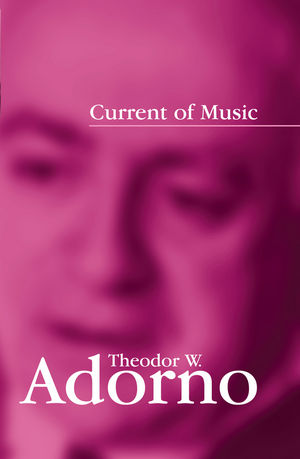Current of MusicISBN: 978-0-7456-4286-4
Paperback
480 pages
March 2009, Polity
 This is a Print-on-Demand title. It will be printed specifically to fill your order. Please allow an additional 10-15 days delivery time. The book is not returnable.
Other Available Formats: Hardcover
|
||||||
Current of Music is the title that Adorno himself gave to
this research project. For complex reasons, however, Adorno was not
able to bring the several thousands of pages of this massive study,
most of it written in English, to a final form prior to leaving New
York for California, where he would immediately begin work with Max
Horkheimer on the Dialectic of Enlightenment. Robert Hullot-Kentor,
the distinguished Adorno scholar, reconstructed Adorno's project
for the Adorno Archive in Germany and provides a lengthy and
informative introduction to the fragmentary texts collected in this
volume.
Current of Music will be widely discussed for the light it throws on the development of Adorno's thought, on his complex relationship with Walter Benjamin, but most of all for the important perspectives it provides on questions of popular culture, the music of industrial entertainment, the history of radio and the social dimensions of the reproduction of art.



